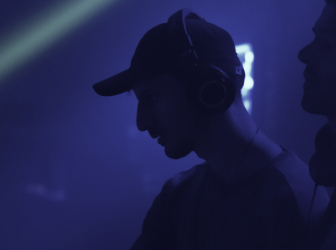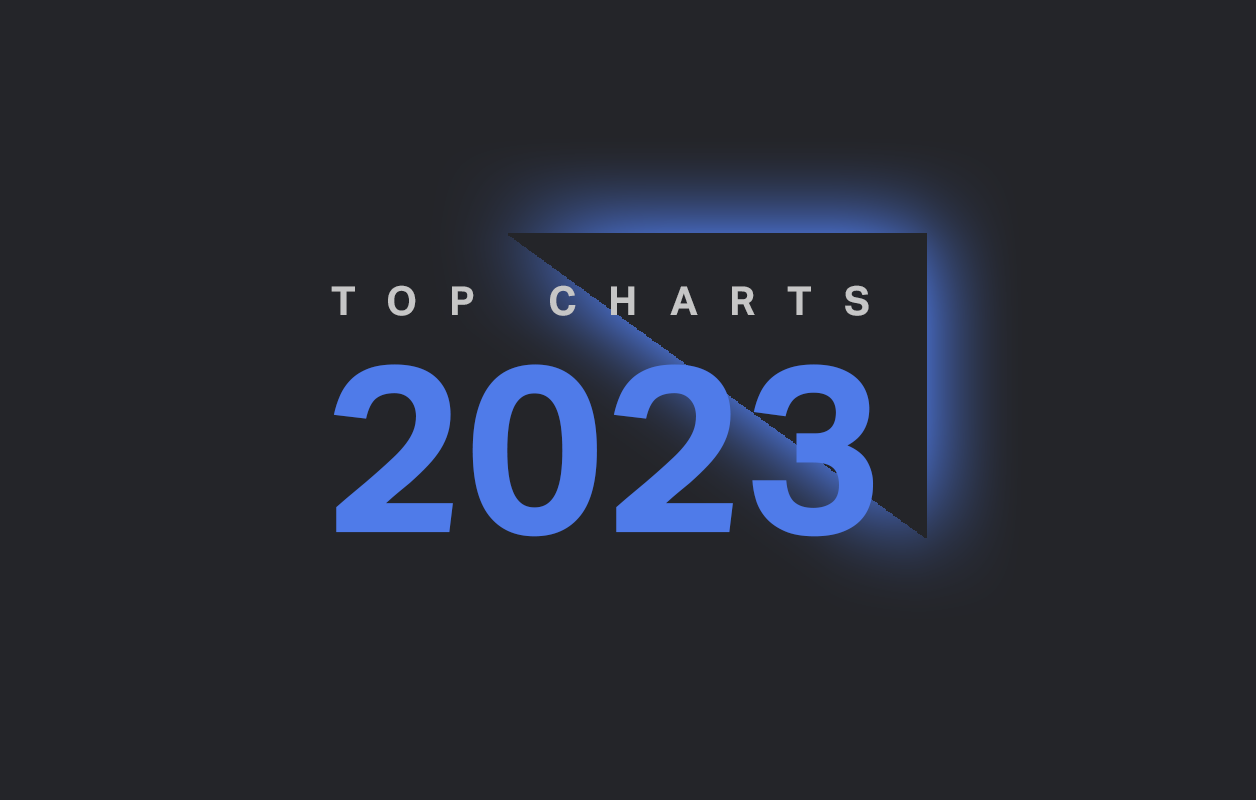How To Become A DJ Producer In 2025 (Step-By-Step)

Learning how to become a DJ producer is an effective way to take your career to the next level, build a talent stack, and reach a new audience.
With many free or affordable programs to choose from, producing music has never been easier, and there are lots of online resources to help you get started.
In this step-by-step guide, we’ve covered everything you need to know, from mastering software to collaborating with artists and getting your work heard.

How To Become A DJ Producer In 2025 (Step-By-Step)
Music production is a multi-faceted art form requiring an understanding of mixing and mastering, chords and melodies, and other technical aspects.
We’ve covered all of these considerations as well as advice on getting your tracks noticed by popular DJs to become a DJ producer.
Without further ado, here’s our step-by-step guide to becoming a DJ producer in 2025:
Step 1: Master DJing Skills
Understanding the fundamentals of DJing is a great starting point when it comes to venturing into the world of music production.
There are many DJ technical aspects that carry across to music production software, so mastering your DJ controller will help you create your own tracks.
Learning how to beatmatch will help you to understand song structure, while harmonic mixing will give you plenty of musical ideas to try in your own music.
Tools and features commonly found in DJ software, such as filters, EQs, and pitch adjustments, are frequently used by music producers to create music.
All of these skills are something beginner DJs need to learn, so if you’re unfamiliar with the basics, make sure you dedicate time to mastering them.
Honing your mixing skills by playing DJ sets will also give you a good understanding of how electronic music producers craft their tunes.
Intros, outros, breakdowns, and the peaks and troughs that make electronic music work on the dance floor are all aspects of production you need to know.
Step 2: Learn Music Theory
Learning music theory is the next important step to becoming a music producer, and there are dozens of resources online to help you achieve this.
There are lots of informative tutorials on YouTube, Reddit, and other platforms, as well as dedicated online courses if you’re willing to invest the money.
The basics of music theory include understanding how time and key signatures function, the structure of beats, bars, and phrases, and overall song structure.
Other aspects you need to grasp include how harmonies and chords work and the function of scales and melodies in creating depth and feeling.
Owning a decent MIDI keyboard with several octaves is also an advantage when learning music theory, saving time and effort compared to entering values with a mouse.
A MIDI keyboard also allows you to input drum and other percussion patterns in an intuitive and organic way and develop a connection to the rhythm.
The process of learning music theory is ongoing, and most producers will continually learn new things as they hone their composition and production craft.
Step 3: Invest In A DAW
Perhaps the most essential software you need when producing music is a digital audio workstation (DAW), through which you’ll arrange and edit your music.
There are several programs widely used for music production, with Native Instruments’ Ableton Live, Cubase, and Logic Pro among the most commonly used by professionals.
A DAW is where you sequence all of your track’s sound elements, from the beats and effects to the vocals, synthesizers, and other sounds.
You can also use these for audio recording, adding your own samples and vocals, or recording any live instruments you can play.
These elements are then arranged in sequence in the DAW’s interface, which also allows you to mix each channel as well as master the song.
You can also expand your skills beyond simply using a DAW, for instance, by investing in the best audio-to-MIDI plugins and other software for producing music.
Working on your own productions from the comfort of your home is easier than ever before, and the days of renting out a professional recording studio are in the past.
Step 4: Understand The Mixing Process
Mixing and mastering your music can be a complicated process, and while professional producers will use dedicated mastering services, it’s possible to do this yourself.
An understanding of the basic DJ transitions will go a long way to mixing your music and making it sound polished and professional.
As every performance DJ knows, using the EQ controls to fade low, mid, and high frequencies out of the mix helps to blend tracks together smoothly.
The same technical skills apply to producing music, where the EQ, filters, and other DJ mixing techniques help to give your music structure and flow.
You can also dedicate time to learning how to master your own tracks, the process of which takes place in the final stages when your composition is complete.
Mastering involves balancing out the track’s dynamics to ensure it sounds good on all sound systems, is free of distortion, and has plenty of headroom.
Limiting, compression, equalization, and other noise reduction skills all come into play when learning how to master music to make it sound its best.
Step 5: Learn Melodies & Chord Progressions
We’ve touched briefly on the importance of melodies and chords when investigating music theory, but it warrants exploring in more detail.
Melodies and chords are the heart and soul of your music, bringing warmth and emotion to the table and elevating basic beats into a recognizable song.
Different producers approach chords and melodies in different ways, with some opting to work on chords first and others beginning with the melody.
If you’re working with a vocalist who has a melody in mind, this will give you a clear idea of what key the song is in and how you can integrate chords.
Conversely, developing a coherent chord pattern and structure first will inform you of what key changes you need to follow when writing melodies.
You can get a feel for how these elements are structured by listening to different genres and paying close attention to the interplay between melodies and chords.
Look into the methods used by other music producers and see how they approach these elements and adopt any techniques that suit your style.

Step 6: Experiment With Sound Design
If beats and percussion form the backbone of music and melodies and chords the heart, sound design brings additional nuance and texture to the table.
As every successful DJ understands, mastering DJ sound effects is crucial for adding variety and atmosphere when playing music.
The same principle applies when producing your own music, whether you’re adding reverb to give your drums more space or warping vocals with vocoders.
There are hundreds of impressive plugins you can introduce to a DAW that deliver a broad range of effects to enhance your track’s overall feel.
These can be used to manipulate your samples and synthesizers with subtle tweaks or completely alter them beyond recognition.
Start by choosing a synthesizer preset, then apply adjustments by altering values using your MIDI keyboard’s knobs and sliders to see what works best.
Learning these techniques is an ongoing process where experimentation is key, so begin with a single audio file and see what new textures you can create.
Step 7: Collaborate With Other Artists
The learning process of music production can be fast-tracked by collaborating with other producers and artists on your tracks.
As well as allowing you to network, collaboration becomes a knowledge-sharing process whereby each participant brings their unique skills to the table.
If you know any musicians who can play an instrument, ask them to contribute samples or melodies you can use to help make your music more original.
Likewise, instead of using vocal samples downloaded from the internet, reach out to any singers you know who may be interested in performing acapella tracks.
Working with local artists opens up the opportunity to transform an okay track into a great track, bringing fresh ideas to the structure and composition.
It also helps you to foster and strengthen a community of like-minded people in your area, getting access to unreleased music and picking up live gigs.
Once you’ve completed a collaborative track, your potential reach in terms of marketing is also significantly expanded as each participant shares the tune on social media.
Step 8: Learn To Play A Musical Instrument
While many producers assume that playing a musical instrument isn’t essential when creating dance tracks using a DAW, it can significantly help your process.
Perhaps the most important instrument you can learn to play is the piano since this is a foundational instrument used for composition over the centuries.
The piano allows the player to simultaneously play chords and melodies with a rhythmic element that combines all the main elements of the structure.
Form, style, harmony, and other compositional rules are all improved when a producer develops the ability to play the piano well.
It’s also directly related to using a MIDI keyboard for music production, which rapidly speeds up the arrangement and editing of notes and chords.
If learning to play the piano doesn’t appeal to you, there are lots of other instruments you can learn that can be handy when producing music.
Single-voice instruments such as violins and trumpets are perfect for creating your own melodies, while guitars can be used for chords and leads.
Whatever instrument you choose, learning how to play it will help you to develop a better understanding of the fundamentals of music and improve your production skills.
Step 9: Make Mashups & Remixes
While producing your own music is incredibly rewarding and lots of fun, it can be harder to get other DJs to play stuff you’ve made at their gigs.
One way to gain their attention when first starting out is to make mashups and remixes of more popular tracks that you love.
Learning how to make mashups is relatively easy and is a great way to start mastering the basics of production before dedicating time to original content.
It will give you the skills and insights into sample manipulation while also providing great practice for restructuring two tracks you’re familiar with.
Likewise, remixes allow you to get to grips with the core processes involved in the production, recombining elements of one track to create something new.
If you’re planning on releasing your mashup or remix to the public, you’ll need to be aware of potential copyright infringement and reach out to the artist or label.
With that said, many DJs play their own remixes at gigs in local bars to get a feel for the response they generate.
Step 10: Promote Your Music
Once you’ve completed a selection of tracks you’re happy with, it’s time to reach out to other DJs and record labels to promote them to a wider audience.
While world-class DJs might be hard to get on board, you can start out by playing your own music at DJ gigs in your local area.
If you’re already a successful DJ, you can use your platform to directly promote your tracks to other DJs and artists who are in your professional network.
Likewise, breaking into the mainstream music industry is incredibly competitive, but there’s nothing stopping you from setting up a small record label to push your tunes.
Spend some time exploring the various approaches you can take to DJ marketing, from creating a unique logo and branding to building an online presence.
Social media pages, hosting platforms such as SoundCloud, and a dedicated website showcasing your new tracks are all effective promotional methods.
The more promotional tools you take advantage of, the higher the likelihood your tracks will get heard by the right people in the industry.
Summary
That’s a wrap on this guide to learning how to produce music to enhance your DJing profile and establish a unique style and brand of your own.
Some of the biggest DJs in the world are known for their impressive production skills and have strengthened their brands by releasing their own tracks.
As you continue to hone your production skills and expand your discography, you’ll compete with world-class artists.
Not a member ?
Join Today for Unlimited Music Downloads. Visit zipdj.com for more information.



